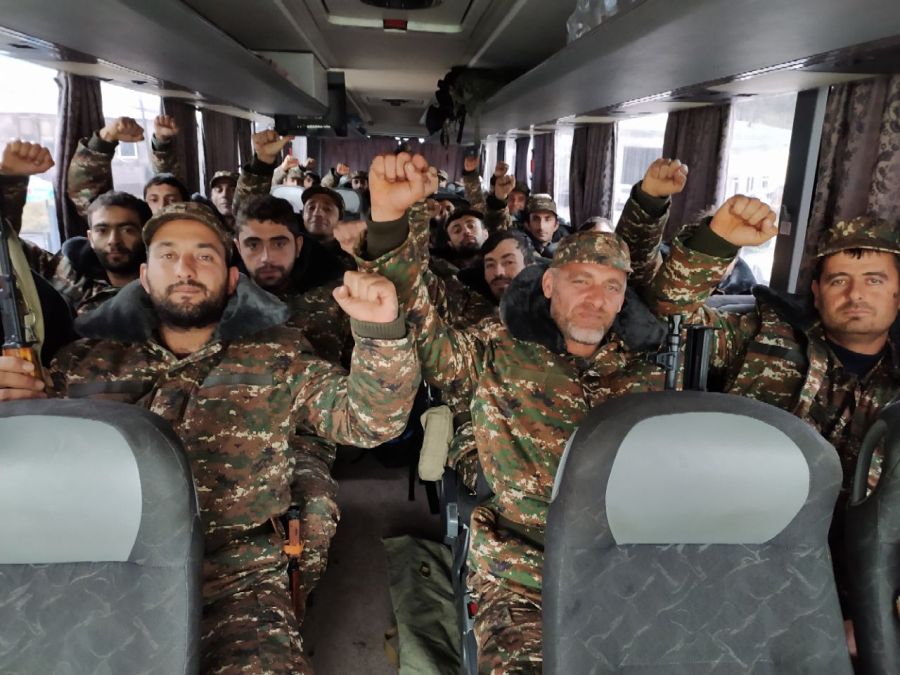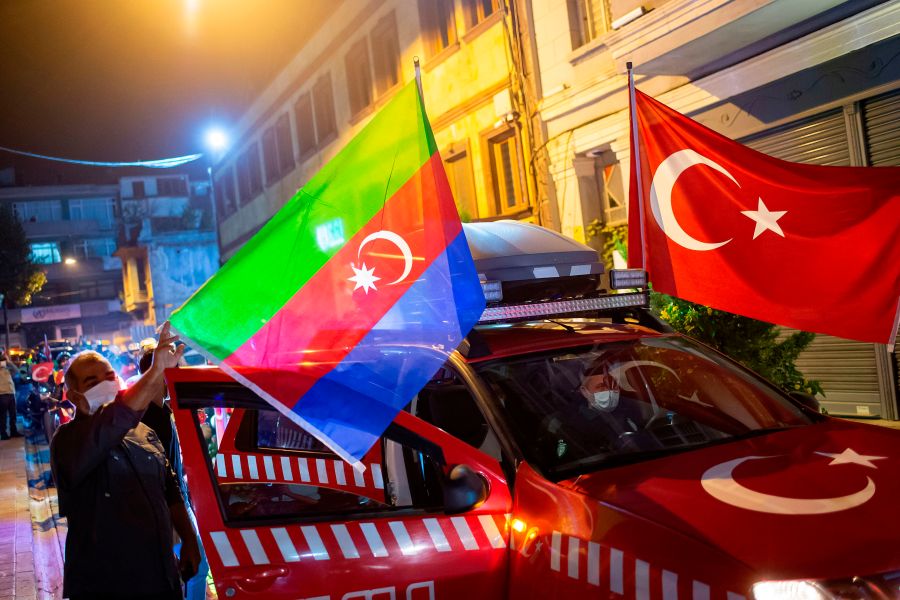The deadly fighting between Armenia and Azerbaijan over the disputed Caucasus territory of Nagorno-Karabakh, also known as Artsakh, has deep roots and could cause fallout beyond the region.
The territory is located inside Azerbaijan but has been controlled by local Armenian forces backed by Armenia since 1994 when a fragile truce ended years of war. A lasting peace deal has never been reached, despite years of mediation efforts by international powers.
Turkey has offered support for fellow Muslim nation Azerbaijan, while Russia is a key ally of predominantly Christian Armenia.
The fighting has prompted multiple protests in the Los Angeles area, which has the world’s largest Armenian population outside of Armenia.
The Associated Press explains what’s behind the long-unresolved conflict and its most recent flare-up:
What and where is Nagorno-Karabakh?
Nagorno-Karabakh is a region within Azerbaijan that has been under the control of ethnic Armenian forces backed by the Armenian government for more than a quarter-century.
The territory in the southern Caucasus Mountains covers an area of about 4,400 square kilometers (1,700 square miles) about the size of the U.S. state of Delaware.
How did the conflict start?
During the Soviet era, the mostly Armenian-populated region had an autonomous status within Azerbaijan. Long-simmering tensions between Christian Armenians and mostly Muslim Azeris, fueled by memories of the 1915 massacre of 1.5 million Armenians by Ottoman Turks, boiled over as the Soviet Union frayed in its final years.
The open conflict broke out in 1988 when the region made a bid to join Armenia, triggering hostilities. In 1991, Nagorno-Karabakh held an independence referendum in which 82% of all voters participated and 99% voted for independence. But when the USSR collapsed soon after, hostilities turned into a full-blown war that killed an estimated 30,000 people and displaced about 1 million.
By the time the war ended with a cease-fire in 1994, Armenian forces not only held Nagorno-Karabakh itself but also seized substantial areas outside the territory’s borders.

What’s happened since?
International mediation efforts to determine the region’s final status have brought little visible progress.
Landlocked Armenia has suffered badly from an economic blockade imposed by Azerbaijan and its ally, Turkey.
The region has remained tense and fighting has periodically broken out. Scores were killed in an outbreak of hostilities in 2016, and then again this July when Azerbaijan and Armenia exchanged fire across their border.
Since new fighting started on Sept. 27, the warring sides reported hundreds of deaths, making it the biggest escalation in the conflict since 1994.
Nagorno-Karabakh officials said about 220 soldiers and at least 21 civilians have died in the fighting. Azerbaijani authorities haven’t reported military casualties but said 27 civilians have been killed.
Both sides have accused each other of expanding the hostilities onto their territory beyond Nagorno-Karabakh.
The fighting involving heavy artillery, drones and warplanes has continued despite calls for a cease-fire from the West and Russia.

What’s the broader impact?
In addition to causing casualties and damage, the conflict in the small, hard-to-reach region is also of concern to major regional players.
Orthodox Christian Russia is Armenia’s main ally and sponsor and has a military base there.
NATO-member Turkey, which has close ethnic, cultural and historic bonds with Azerbaijan, has vowed its full backing to Baku in the conflict and has declared its readiness to support it militarily, if necessary. Turkey has backed Azerbaijan’s demand for Armenia’s withdrawal from Nagorno-Karabakh as a precondition for any ceasefire.
Turkey has trained Azerbaijani officers for decades and the two countries, which often refer to their special relationship as one of “two states, one nation,” recently conducted military exercises in Azerbaijan. Ankara is known to have sold drones and other weapons to Azerbaijan.
Iran neighbors both Armenia and Azerbaijan and is calling for calm.
The United States, France and Russia are the official sponsors of the long-stalled peace process under the auspices of the Vienna-based Organization for Security and Cooperation in Europe. The three countries have repeatedly called for cessation of hostilities and peace talks.






















